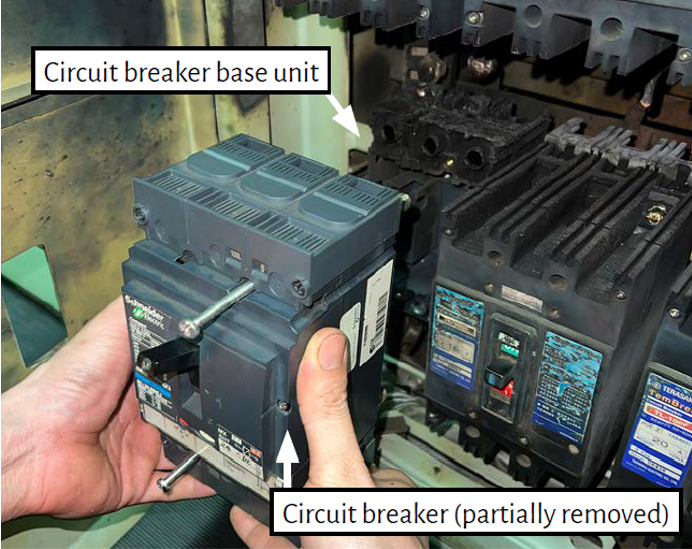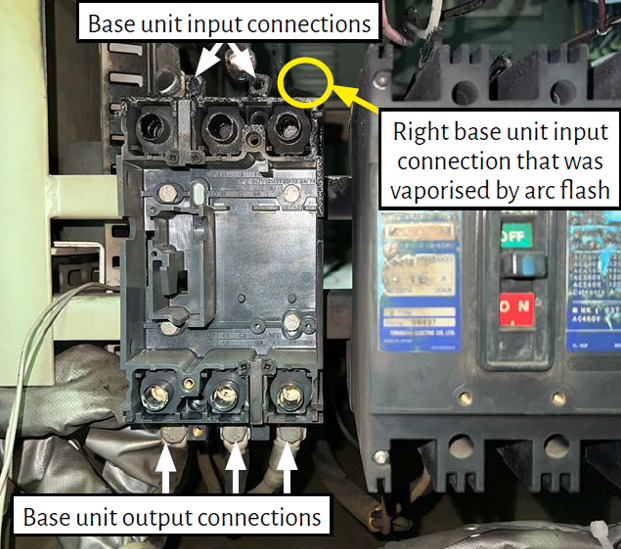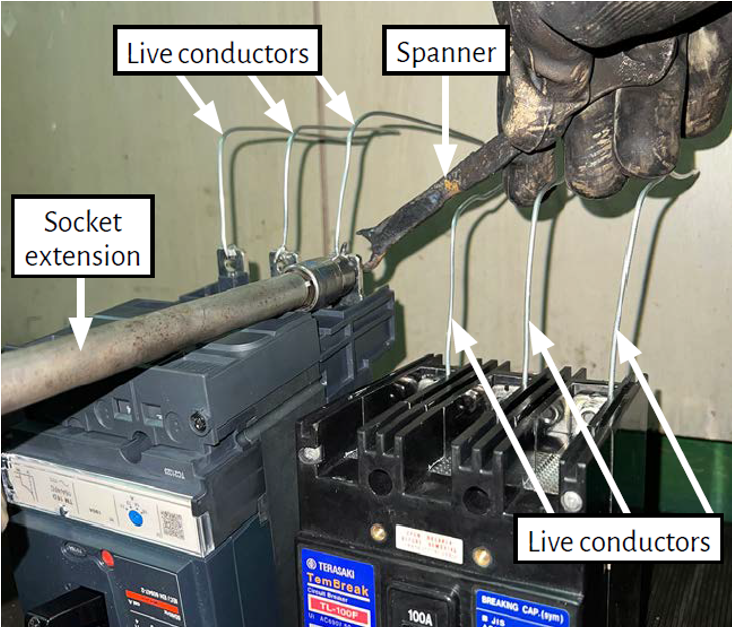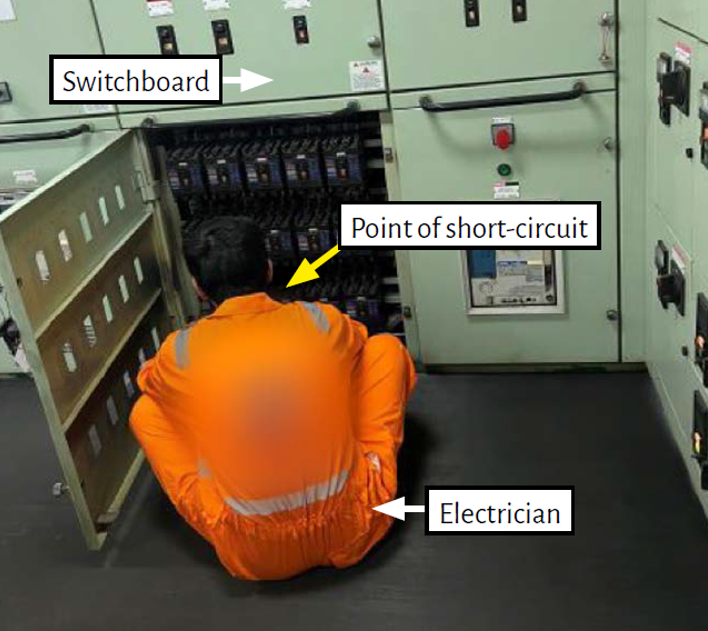MAIB: Electrician injured in explosion
The UK Marine Accident Investigation Branch has published Safety Digest 2/2023, consisting of lessons from recent Marine Accident Reports. IMCA has reviewed the report and passes on to members, as some of the incidents in the MAIB report will be of interest. This is one of them.
What happened
An electrician was badly injured while working on a switchboard. The circuit breaker was designed to be removed without the need to isolate the base unit (Figure 1);

However, the electrician was unfamiliar with this arrangement and had loosened one of the live connections on the input to the base unit (Figure 2).

The electrician used rubber gloves to insulate himself from the live 440 V alternating current terminals when working on the connections.
The electrician tried to reconnect the cables to the base unit using a socket extension on the head of the bolt and a spanner to hold the nut in position at the rear of the connections. As the electrician tightened the bolt on the live input connection, the nut rotated and the steel spanner touched an uninsulated copper conductor on the adjacent circuit breaker base unit. This caused a short‑circuit between two phases of the switchboard (Figure 3).

The short-circuit caused a high current to flow, vapourising the copper conductor and part of the spanner in an arc flash creating extreme heat and blinding light. A burst of hot gas and molten metal exploded from the panel onto the electrician’s face and chest (Figure 4).

The ship’s engineers were alerted to a problem with the switchboard when the remote machinery alarm system sounded in the mess room. As the engineers headed to the engine room, the electrician arrived on the ship’s bridge with serious burns to the face and chest. The following day, the electrician was transferred to hospital for medical treatment and later sent home. There was significant damage to the ship’s main switchboard.
What went wrong
- The electrician twice disobeyed clear instructions from the Chief Engineer, to not work in the switchboard;
- The electrician was not familiar with the arrangements within the switchboard – had he took the time to fully understand the arrangement of the circuit breaker and base unit assembly that would have enabled the electrician to safely remove the circuit breaker and reduce the risk.
- The electrician was working alone without a Permit to Work, lock-out/tag-out arrangement or a safe system of work. The work was unexpected and therefore not included in the day’s planning meeting. New work requires a new plan, regardless of time pressures;
- Working near live electrical equipment requires specific tools and PPE. The use of uninsulated tools while working in a live switchboard invited a short-circuit and the electrician, who was not wearing face protection, was lucky not to lose his eyesight.
Members may wish to refer to:
Safety Event
Published: 6 December 2023
Download: IMCA SF 28/23
IMCA Safety Flashes
Submit a Report
IMCA Safety Flashes summarise key safety matters and incidents, allowing lessons to be more easily learnt for the benefit of all. The effectiveness of the IMCA Safety Flash system depends on Members sharing information and so avoiding repeat incidents. Please consider adding [email protected] to your internal distribution list for safety alerts or manually submitting information on incidents you consider may be relevant. All information is anonymised or sanitised, as appropriate.
IMCA’s store terms and conditions (https://www.imca-int.com/legal-notices/terms/) apply to all downloads from IMCA’s website, including this document.
IMCA makes every effort to ensure the accuracy and reliability of the data contained in the documents it publishes, but IMCA shall not be liable for any guidance and/or recommendation and/or statement herein contained. The information contained in this document does not fulfil or replace any individual’s or Member's legal, regulatory or other duties or obligations in respect of their operations. Individuals and Members remain solely responsible for the safe, lawful and proper conduct of their operations.
